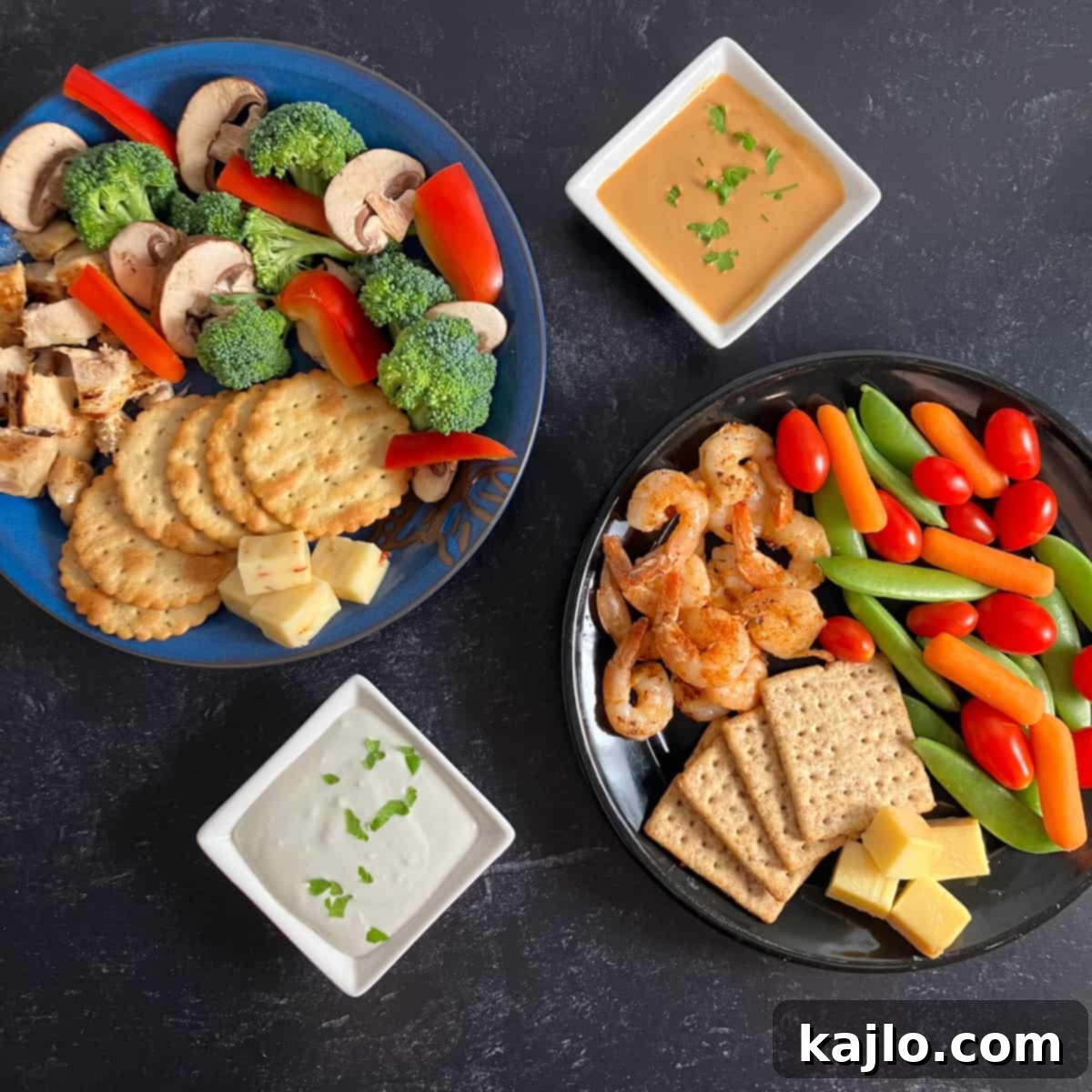Crafting Balanced Meals: Your Essential Guide to MyPlate Eating
Unlock the secrets to effortlessly creating healthy and balanced meals with the MyPlate food guide. This comprehensive article will introduce you to a simple yet effective formula for MyPlate meal planning, making it easier than ever to prepare nutritious breakfasts, lunches, and dinners. Embrace the MyPlate approach to ensure your plate is brimming with the vital nutrients your body needs to thrive, fostering a lifestyle of sustained health and well-being. Discover how adaptable and straightforward MyPlate meals can be, transforming your daily eating habits into a joyful and nourishing experience.
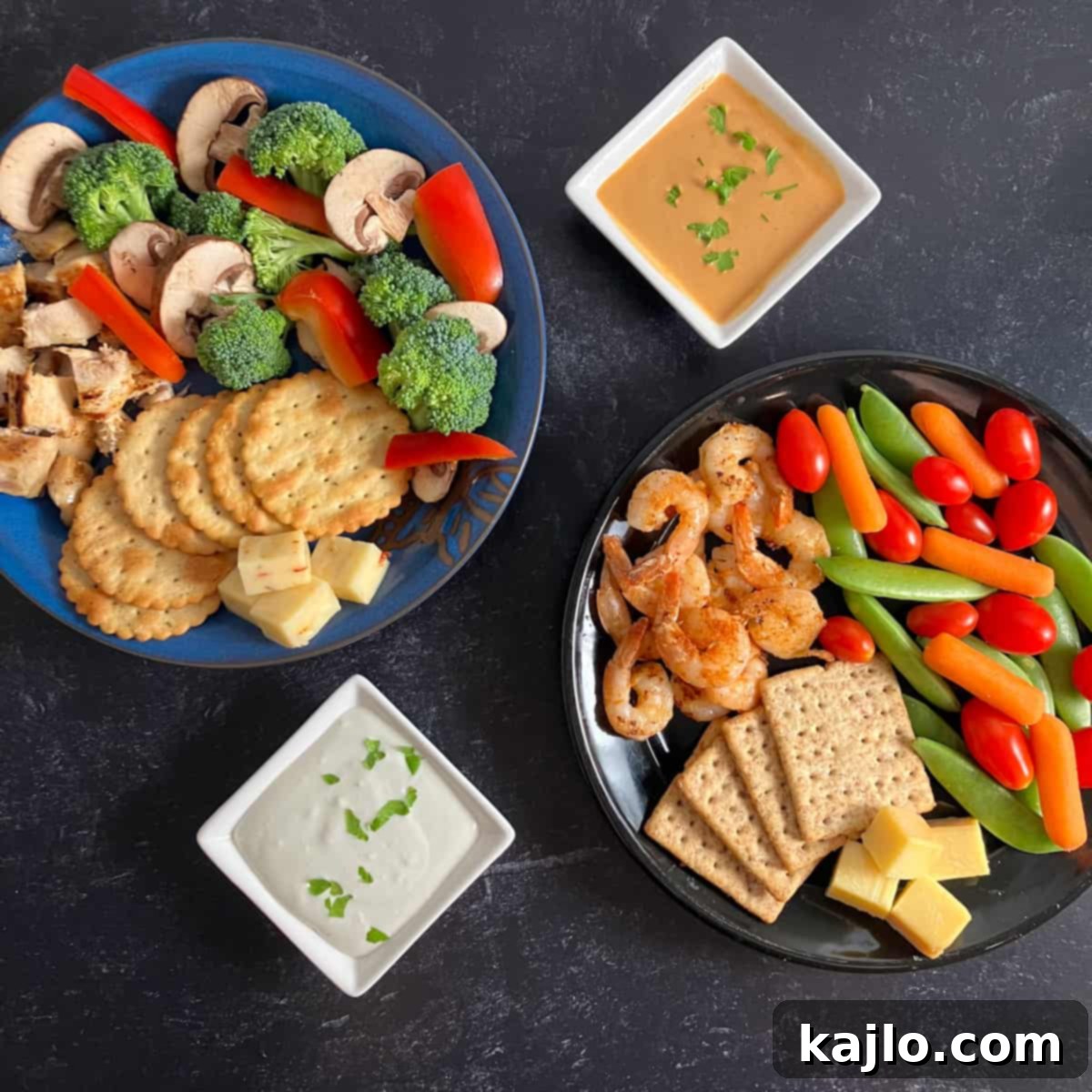
🍽️ Understanding the MyPlate Food Plan: A Foundation for Healthy Eating
The MyPlate meal plan serves as an intuitive visual guide for healthy eating, developed by the United States Department of Agriculture (USDA) based on the Dietary Guidelines for Americans. Adopting a healthy diet built around MyPlate principles is crucial for providing your body with essential nutrients, promoting overall health, and significantly reducing the risk of diet-related chronic conditions such as heart disease, type 2 diabetes, and certain cancers. It’s a powerful tool designed to simplify nutrition, making balanced eating accessible for everyone.
Here are the core recommendations for constructing a balanced food groups plate, guiding you towards optimal nutrition (source):
- Prioritize Fruits and Vegetables (Half Your Plate): Make sure half of your plate is filled with a colorful array of fruits and vegetables. Emphasize whole fruits over juices, and explore a wide variety of vegetables to maximize nutrient intake. This focus ensures you get ample fiber, vitamins, and minerals.
- Choose Whole Grains (Half Your Grains): Opt for whole-grain versions of breads, pastas, and cereals whenever possible. Whole grains retain more fiber and nutrients compared to refined grains, contributing to better digestive health and sustained energy.
- Vary Your Protein Sources: Diversify your protein intake to include lean meats, poultry, fish, beans, lentils, nuts, and seeds. This variety ensures you receive a broad spectrum of amino acids and essential micronutrients.
- Incorporate Low-Fat or Fat-Free Dairy: Select low-fat or fat-free milk, yogurt, or fortified soy milk to meet your calcium needs. Dairy provides essential calcium and Vitamin D for bone health without excessive saturated fat.
- Limit Added Sugars, Saturated Fat, and Sodium: Be mindful of your intake of added sugars, saturated fats, and sodium. These components, when consumed in excess, can contribute to various health issues. MyPlate encourages choosing foods with less of these ingredients.
The beauty of MyPlate meal plan ideas lies in their emphasis on nutrient-dense foods, encouraging the consumption of fiber-rich fruits and vegetables, along with satisfying lean proteins. This flexible framework means the MyPlate meal planner can be easily adapted to accommodate diverse dietary preferences and restrictions, including vegan, vegetarian, and gluten-free diets, making healthy eating inclusive for all.
Crucially, the concept of healthy food on “my plate” doesn’t have to be identical to the healthy food on “your plate.” MyPlate is not a rigid prescription but rather a personalized nutrition framework. It’s designed to be flexible, allowing for individual tastes, cultural preferences, and dietary needs. This adaptability is what truly empowers individuals to take control of their nutritional journey and build sustainable eating habits.
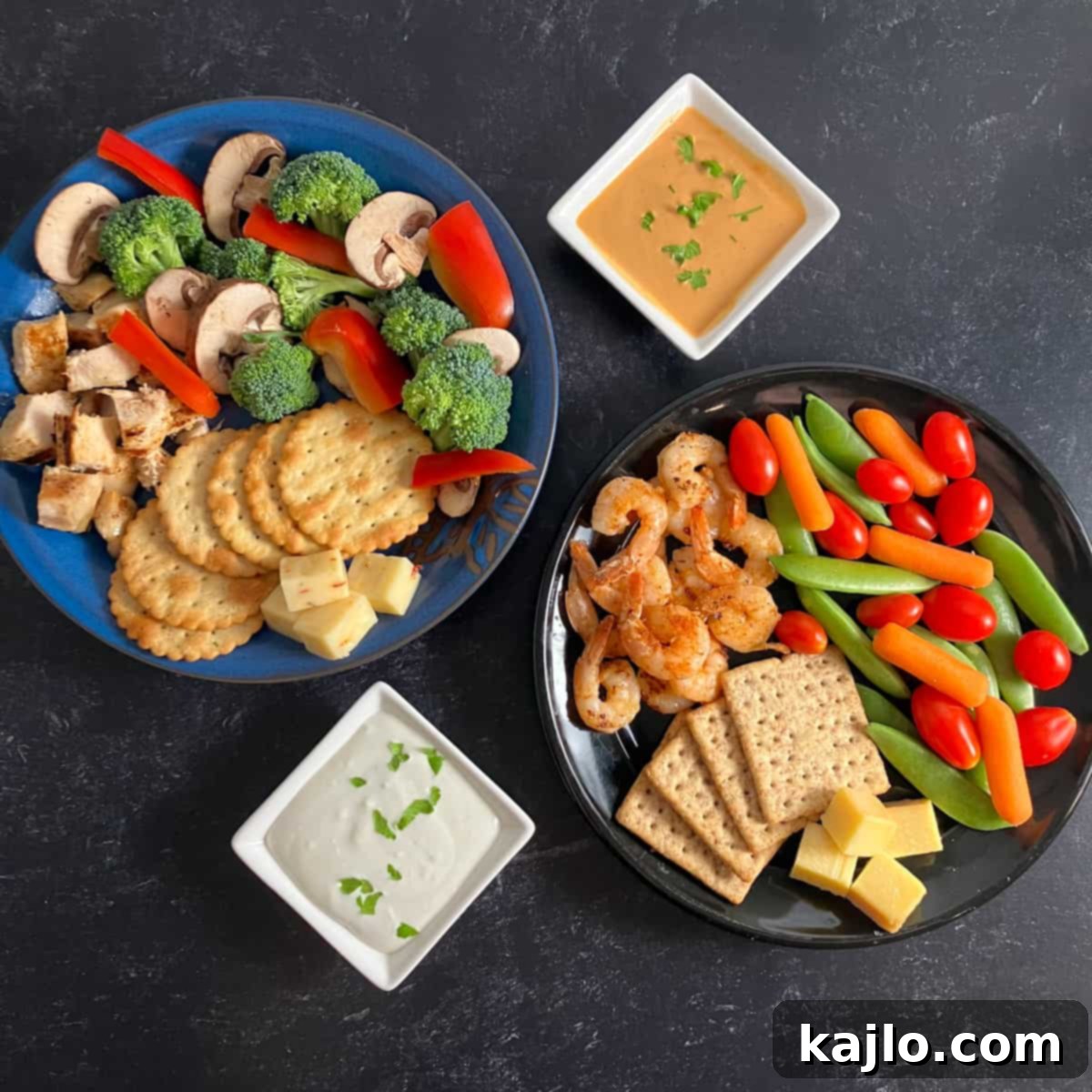
It’s also worth noting that many countries have developed their own visual representations of what a healthy diet looks like, tailored to their cultural eating patterns and nutritional guidelines. For instance, the equivalent of “My Plate” in the UK is known as the Eatwell Guide. You can explore a visual representation of the Eatwell plate on the British Heart Foundation site here, offering an interesting comparison of global dietary recommendations.
🍲 Crafting Your Own MyPlate Meal: Principles and Personalization
At its core, MyPlate meals are simply healthy meals with all the food groups represented in appropriate proportions. The exact quantity of food on your balanced plate will naturally vary, as nutrition is highly individualized. Several key factors determine your specific dietary needs and how much you should consume from each group (source):
- Age: Nutritional requirements shift significantly from childhood to adulthood and into senior years.
- Sex: Men and women typically have different caloric and nutrient needs due to physiological differences.
- Height and Weight: These metrics are fundamental in calculating basal metabolic rate and overall energy expenditure.
- Physical Activity Level: Individuals with more active lifestyles require greater caloric intake and often higher amounts of specific macronutrients.
Understanding these variables allows you to tailor MyPlate guidelines to your unique physiological demands, ensuring you fuel your body effectively for optimal health and performance. For personalized guidance, consulting with a registered dietitian is always recommended.
The Five Essential MyPlate Food Groups
The MyPlate model simplifies healthy eating by categorizing foods into five distinct groups, each vital for a well-rounded diet. These are:
- Fruits: Providing essential vitamins, minerals, and fiber, fruits are a naturally sweet and healthy component of any meal.
- Vegetables: Packed with an abundance of nutrients, antioxidants, and fiber, vegetables are critical for overall health and disease prevention.
- Grains: Offering complex carbohydrates for energy, especially whole grains, which are rich in fiber and beneficial compounds.
- Protein Foods: Essential for building and repairing tissues, this group includes a variety of animal and plant-based sources.
- Dairy: A primary source of calcium and Vitamin D, crucial for bone health. This group also includes calcium-fortified soy alternatives for those avoiding dairy.
Each food group contributes unique nutrients, and combining them in the recommended proportions ensures a comprehensive intake of everything your body needs.
To provide a clearer picture of how these food groups translate into daily consumption, specific targets are outlined based on an individual’s caloric needs. For instance, let’s consider the MyPlate daily plan for a typical 2000-calorie diet, a common reference point for average adult needs (source):
- Fruits: Aim for 2 cups daily. This could be a medium apple, a large banana, or a cup of berries.
- Vegetables: Strive for 2½ cups daily. This diverse category includes leafy greens, colorful peppers, and root vegetables.
- Grains: Consume 6 ounces daily. To put this into perspective, 1 slice of bread, 1 small tortilla, or ½ cup of cooked grains like quinoa or brown rice each count as 1 ounce.
- Protein Foods: Target 5½ ounces daily. One ounce can be fulfilled by 1 ounce of cooked meat, poultry, or seafood; ¼ cup of cooked beans or lentils; 1 egg; or 1 tablespoon of peanut butter.
- Dairy: Aim for 3 cups daily. This could be 3 cups of milk or yogurt. Note that 1½ ounces of hard cheese counts as “1 cup” of dairy, so it’s important to read labels for accurate equivalents.
These guidelines provide a flexible framework, allowing you to choose your favorite foods within each category while working towards a truly balanced and nutritious daily intake.
Over the years, I’ve refined a personal formula for constructing simple, healthy, and satisfying MyPlate dinners and lunches. This approach emphasizes convenience and the inclusion of all essential food groups, making healthy eating a breeze even on busy days. Here are the key components I integrate into each meal, which we’ll explore in more detail:
- 4-6 ounces of Protein: Cut into bite-sized pieces for easy consumption, this provides satiety and essential building blocks for your body.
- Three Different Non-Starchy Vegetables: As much as you desire! Focusing on a variety of colors ensures a wide range of phytonutrients. (Remember, some items we consider vegetables are botanically fruits).
- One ounce of Cheese: Or another suitable source of calcium to support bone health.
- One Serving of Crackers: Preferably whole grain, or another grain-based option, for energy and fiber.
- 2-4 tablespoons of Dip: A delicious addition that can also serve as a source of healthy fats and enhance the palatability of vegetables.
This formula not only makes meal prep efficient but also encourages creativity and flexibility in your healthy eating journey.
🍎 MyPlate Meal Examples: Simple and Satisfying Combinations
Let’s put the MyPlate formula into action with a concrete MyPlate meal plan example, showcasing how easily you can assemble a delicious and balanced dish:
- Protein: 4 ounces of seasoned shrimp (pre-cooked for ultimate convenience).
- Vegetables & Fruits: A generous portion of snap peas, vibrant grape tomatoes, and crunchy baby carrots, filling half of your plate.
- Grains: 1-2 ounces of whole grain crackers for a satisfying crunch.
- Dairy: 1 ounce of sharp cheddar cheese, cubed.
- Healthy Fat/Dip: 2-4 tablespoons of a creamy, yogurt-based dip with a hint of blue cheese.
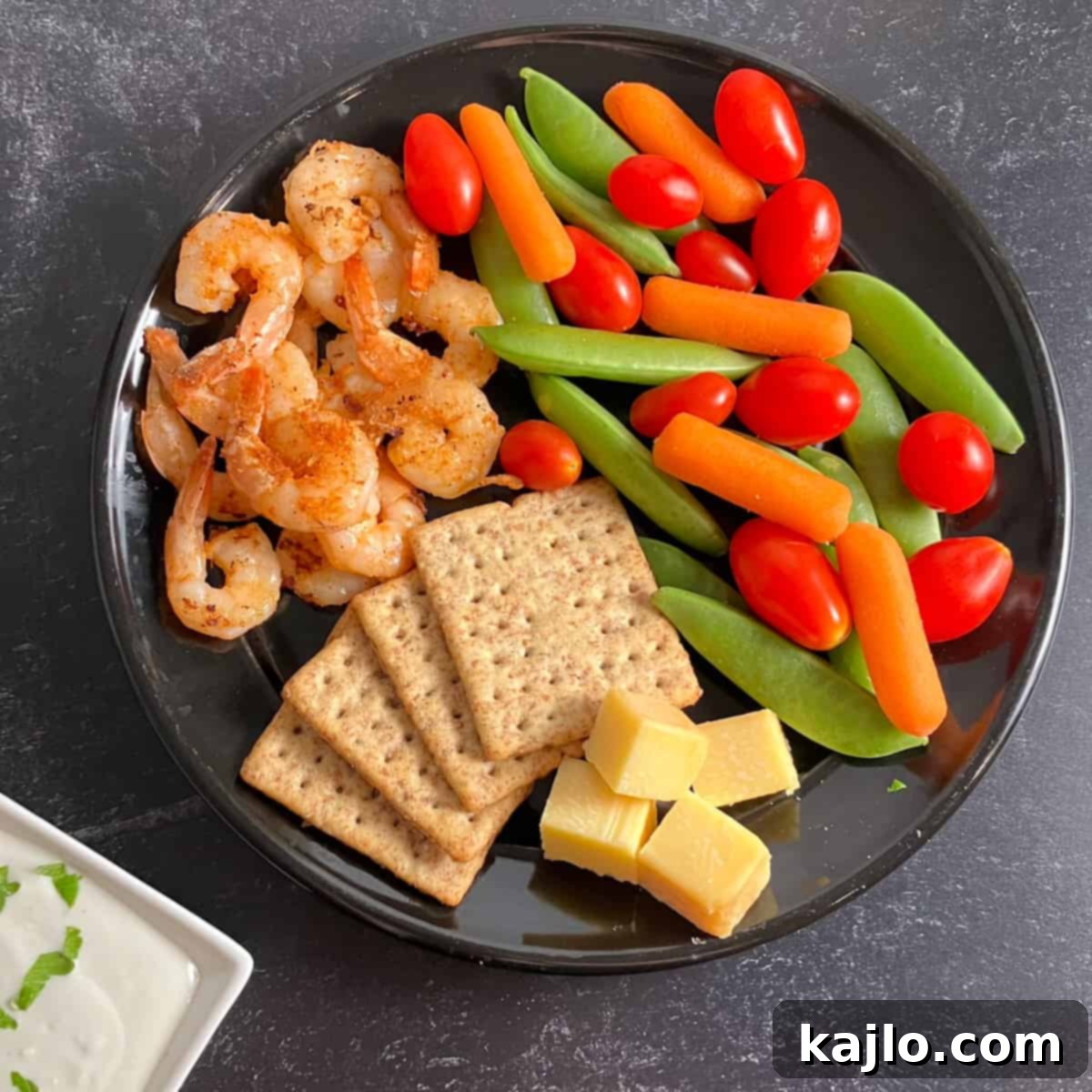
This example delivers a complete and satisfying meal, essentially a gourmet-style cheese and cracker platter elevated with additional protein, fresh vegetables, and a flavorful dip. The beauty of this particular combination is that it’s entirely composed of finger foods, often a huge hit with children and perfect for casual dining. Crucially, all five essential food groups are covered (or close enough, considering that many botanical fruits are commonly categorized as vegetables in culinary contexts).
Whether your goal is weight management or simply to incorporate more wholesome foods into your diet, this “recipe” significantly speeds up dinner preparation. It’s also an excellent way to utilize those leftover odds and ends from the refrigerator, minimizing food waste. This framework is incredibly flexible, allowing you to easily modify components to suit the preferences, dietary needs, or allergy concerns of everyone in your household.
Furthermore, if you opt for pre-cooked protein sources, this meal requires absolutely no cooking. The finger-food format means you often don’t even need utensils, simplifying cleanup. With such minimal effort and maximum nutritional benefit, there’s virtually no downside to embracing these convenient and delicious MyPlate-inspired dinners. Why not give them a try tonight?
Here’s another versatile MyPlate example, demonstrating its adaptability:
- Protein: 4 ounces of perfectly grilled chicken, sliced.
- Vegetables: A vibrant mix of steamed broccoli florets, crisp red bell pepper strips, and earthy sautéed mushrooms, filling half of your plate.
- Grains: 1-2 ounces of hearty whole grain crackers.
- Dairy: 1 ounce of zesty pepper jack cheese, adding a flavorful kick.
- Healthy Fat/Dip: 2-4 tablespoons of your favorite “special sauce” (e.g., a homemade aioli or a creamy avocado dressing).
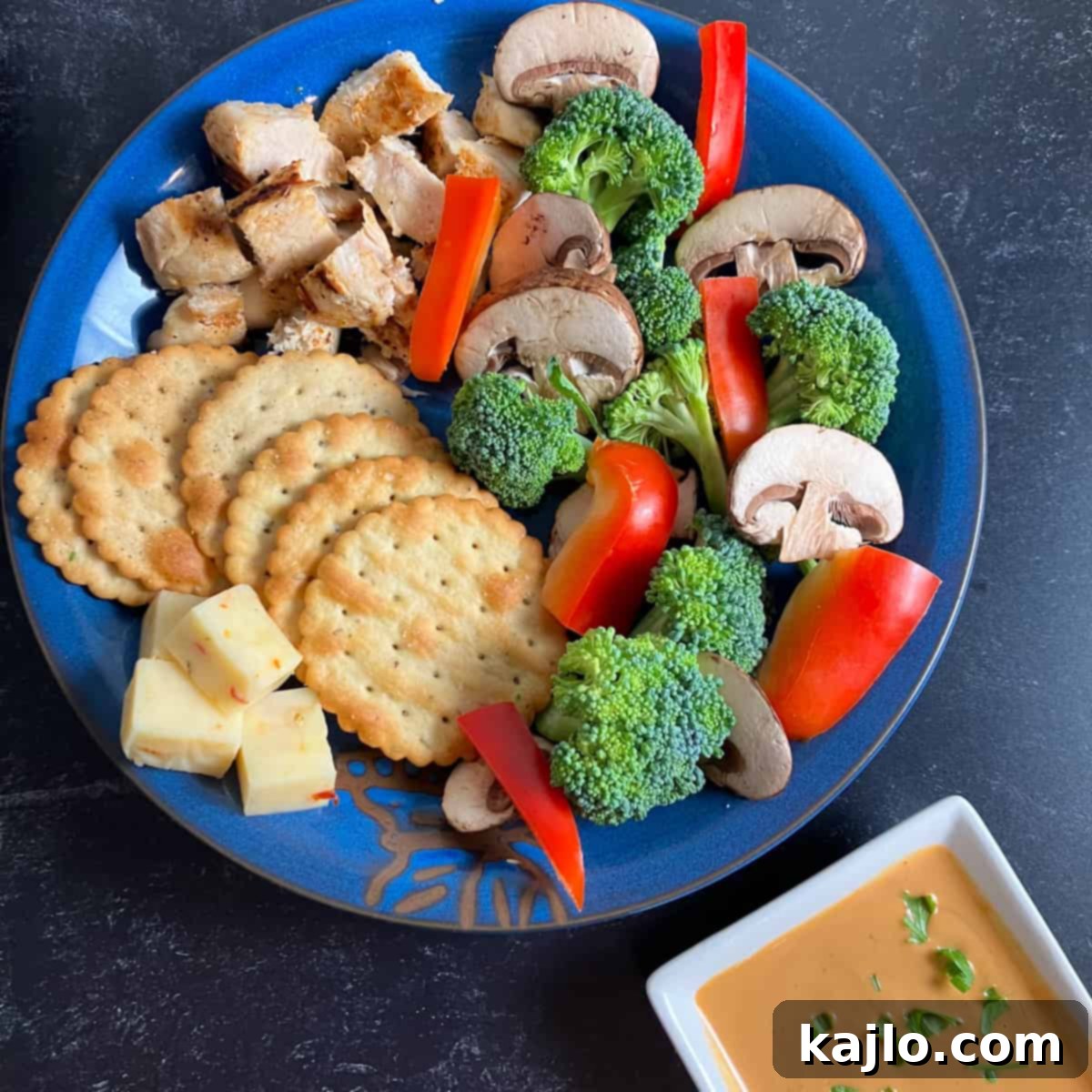
A Sample MyPlate 7-Day Meal Plan for Diverse Palates
The two meal ideas above offer a glimpse into the versatility of the MyPlate approach, but this plan can truly be used to inspire an infinite number of nutritious meals! To further illustrate how integrated and diverse healthy eating can be, here’s a detailed example of what a MyPlate weekly meal plan might look like, providing ideas for every meal of the day:
| Day | Breakfast | Lunch | Dinner |
|---|---|---|---|
| Sunday (Day 1) | Quiche in whole grain crust with cheese, eggs, broccoli. Apple on side | Beef vegetable soup with crackers and a glass of milk | Meatloaf, mashed potatoes, Swiss chard, glass of milk |
| Monday (Day 2) | Oatmeal topped with bananas, strawberries, and peanut butter. Glass of low-fat milk | Turkey and cheese sandwich on whole-wheat bread. Side salad packed with veggies | Grilled shrimp, cheese, crackers, celery, carrots, mushrooms, and your favorite dip |
| Tuesday (Day 3) | Veggie omelet with cheese. Toast and an orange on side. | Split pea veggie soup with whole wheat crackers and a glass of milk | Cheeseburger on a whole grain bun with a side salad |
| Wednesday (Day 4) | Oatmeal topped with cinnamon, nuts, and raisins. Glass of milk | Grilled chicken salad with lots of veggies, topped with cheese and tortilla strips | Steak with bell peppers, onions, mushrooms, with cheesy brown rice on side |
| Thursday (Day 5) | Veggie omelet with cheese. Toast and blueberries on side. | Chicken noodle soup (packed with veggies). Milk and an apple on the side | Grilled chicken, cheese, crackers, snap peas, grape tomatoes, radishes, and your favorite dip |
| Friday (Day 6) | Whole grain cereal with milk and raspberries. Hardboiled egg on side | Tuna salad sandwich with green salad, apple, and glass of milk | Black bean and sweet potato curry over rice with a glass of milk |
| Saturday (Day 7) | Quiche in whole grain crust with cheese, eggs, asparagus. Berries on side | Grilled cheese and tomato sandwich with bean and corn soup | Seasoned tilapia with quinoa, watermelon cucumber salad and glass of milk on the side |
🥣 What meal successfully incorporates all 5 food groups?
Many meals can be designed to include all five MyPlate food groups, making balanced eating both simple and delicious. Salads are often excellent candidates, as they can be easily customized with a wide array of vegetables, fruits (like berries or apple slices), protein sources (grilled chicken, beans, nuts), and a dairy component (cheese or yogurt dressing). If your salad doesn’t naturally include a grain, simply add a side of whole-grain croutons, tortilla strips, or a piece of whole-wheat bread or crackers. Similarly, some soups and casseroles can be crafted to encompass all five food groups, though you might need to add a fruit or dairy side dish to complete the MyPlate recommendations. The key is thoughtful planning and selection.
Fortunately, the possibilities for creating MyPlate meals are virtually endless. The flexibility of the MyPlate guidelines allows for countless combinations of ingredients, ensuring you never get bored with your healthy eating routine. Feel free to draw inspiration from the ideas presented in the following sections and mix-and-match components to create dishes that are perfectly tailored to your taste and nutritional needs.
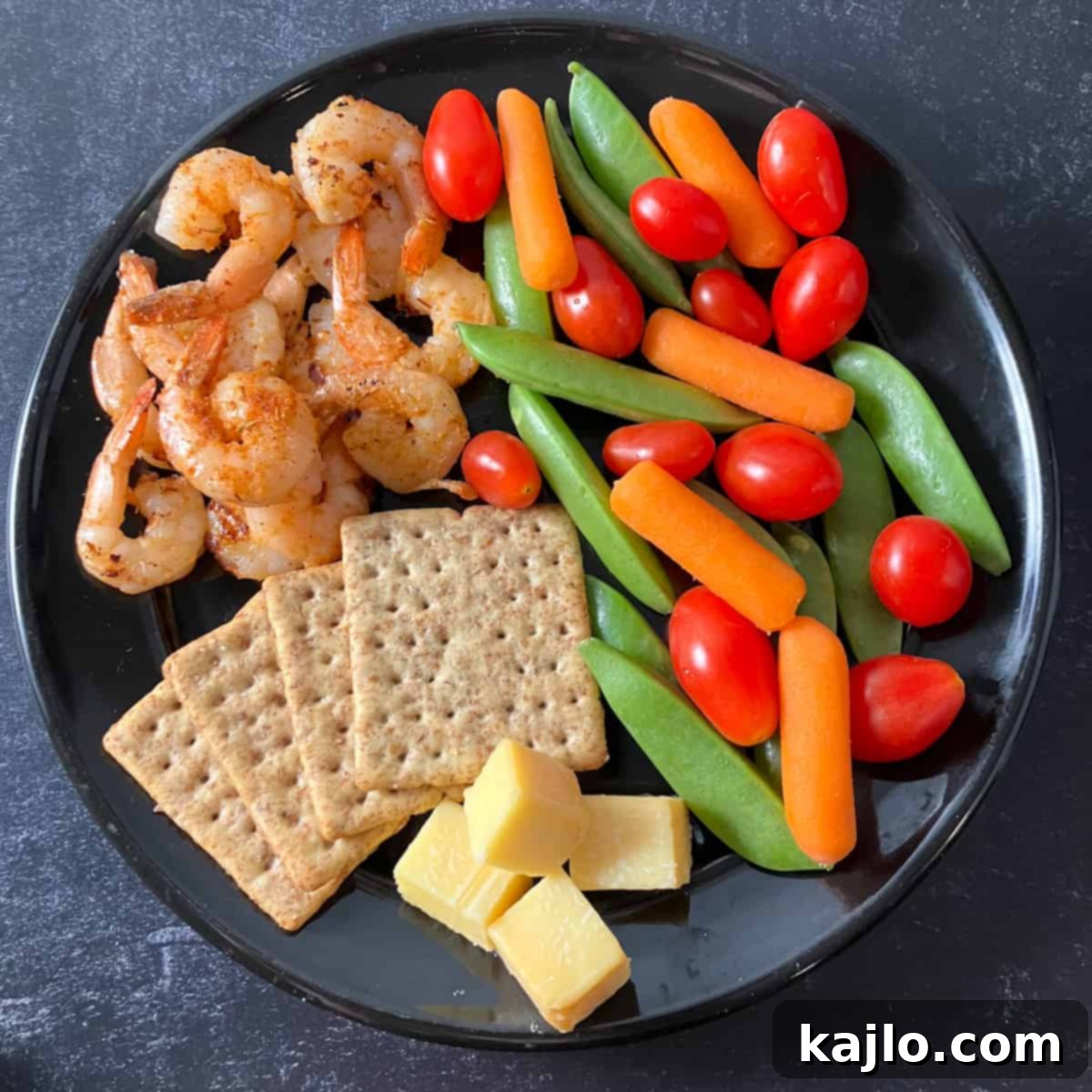
Protein: The Foundation of a Satisfying MyPlate Meal
A crucial component of any MyPlate meal is a robust source of protein. Protein is essential for muscle repair, immune function, and providing sustained energy, helping you feel fuller for longer. When opting for convenience, using leftover protein-rich finger foods means you don’t even need to cook anything from scratch! Consider incorporating a variety of options from the protein food group into your meals:
- Rotisserie chicken breast (shredded or sliced)
- Lean steak (grilled or pan-seared, thinly sliced)
- Baked or roasted ham (sliced, for variety)
- Turkey breast (sliced, a lean and versatile option)
- Falafel (for a plant-based, flavorful choice)
- Shrimp (quickly cooked or pre-cooked)
- Marinated tofu (cubed and pan-fried or baked)
- Edamame (shelled, a quick and easy snack or addition)
- Black beans (cooked, a fantastic source of plant-based protein and fiber)
For those aiming for a lower-calorie meal or focusing on weight management, selecting lean protein options such as shrimp, chicken breast, or tofu is highly recommended. These choices provide substantial protein with minimal saturated fat, supporting your health goals effectively.
Vibrant Fruits and Vegetables: Filling Half Your Plate
The MyPlate dinner formula offers an excellent opportunity to use up any leftover vegetables you might have in your refrigerator, preventing food waste while boosting your nutrient intake. When serving vegetables raw with a dip, it’s best to lean towards non-starchy, crisp salad-style vegetables that hold up well and provide a satisfying crunch.
I typically aim to include vegetables of at least three different colors. This isn’t just for aesthetic appeal; incorporating a spectrum of colors ensures a broader intake of diverse phytonutrients, which are beneficial plant compounds offering various health advantages. However, if you don’t have three distinctively colored vegetables on hand, don’t worry – it’s perfectly fine to work with what you have. Flexibility is key to sustainable healthy eating.
In fact, if your vegetable supply is low, feel free to substitute with sliced fruit. This adds another layer of flavor and nutrients. Just remember to use your judgment regarding which fruits pair well with your chosen dip. Berries, apple slices, or melon cubes can be refreshing additions, though they might not always complement savory dips.
Even if you’re pursuing a weight loss goal, you can generously add as many non-starchy vegetables as you desire to your plate. They are exceptionally low in calories yet provide significant volume and fiber, contributing to satiety without adding excess energy. This makes them a cornerstone of any healthy eating plan. Here are some highly recommended options, keeping in mind that some items often considered vegetables are botanically fruits, and mushrooms are fungi:
- Crisp carrot sticks
- Crunchy celery sticks
- Sweet grape tomatoes
- Pungent radish slices
- Earthy mushroom slices (raw or lightly sautéed)
- Jicama sticks (for a refreshing, starchy crunch)
- Cool cucumber slices
- Fresh green beans (raw or blanched)
- Tender snow peas
- Nutrient-rich broccoli florets
- Mild cauliflower florets
- Colorful bell pepper strips (red, yellow, orange for variety)
One of the greatest advantages of this MyPlate approach is its adaptability to individual preferences. If some family members prefer certain vegetables while others favor different ones, you can easily customize each plate without additional cooking. This personalized assembly makes mealtime enjoyable for everyone and simplifies meal preparation, solidifying its place as one of the easiest “recipes” to modify.
Dairy or Calcium Alternatives: Essential for Bone Health
To ensure adequate calcium intake, I consistently include 1 ounce of cheese per person with this meal. This not only adds a delightful flavor and texture but also contributes vital nutrients. Over the years, experimenting with an assortment of cheeses, from sharp cheddar to creamy mozzarella and tangy feta, has added an element of fun and discovery to our MyPlate dinners. The goal here is to include a source of calcium and protein, not strictly cheese.
If you prefer, you can easily substitute the cheese with a glass of dairy milk. Alternatively, if you’re incorporating a yogurt-based dip (as discussed in the ‘Healthy Fat’ section), you might choose to omit the cheese altogether, as the dip can often fulfill the dairy component of the meal.
For individuals who do not consume dairy, it’s important to be mindful that many non-dairy cheese alternatives may not be fortified with calcium. When seeking non-dairy calcium sources, consider options like canned sardines with bones, as featured in my sardine salad recipe. These provide an excellent source of non-dairy calcium, and serving the salad with crackers and vegetables keeps everything a convenient finger food.
Certain brands of tofu are specifically fortified with calcium, which can potentially cover your calcium needs within this meal (source). Always check the product label to confirm if the tofu you purchase has been fortified, as not all varieties are. It’s also worth noting that while spinach and some other leafy greens contain calcium, its bioavailability (how much your body can absorb) is relatively poor due to high oxalate content (source). Therefore, these should not be relied upon as your primary calcium source in this meal.
Grains: Powering Your Plate with Preferred Whole Grains
Grains are a vital energy source in the MyPlate framework, and choosing whole grains whenever possible significantly enhances the nutritional value of your meal. Options like homemade whole-grain crackers, store-bought multi-grain crackers, whole-wheat tortillas, or artisanal whole-grain bread integrate seamlessly into the MyPlate meal concept. These choices provide essential fiber, B vitamins, and minerals that are often stripped from refined grains.
For individuals adhering to specific dietary approaches such as keto, low-carb, or gluten-free, there are numerous commercially available crackers and bread alternatives that align with these needs. These specialized products allow for inclusion of a ‘grain’ component while respecting dietary restrictions.
During my own weight loss journey, I occasionally opted to skip the serving of crackers in my MyPlate dinner. This simple modification can easily reduce the meal’s caloric content by 100-150 calories, allowing for a focus on more nutrient-dense components like extra vegetables or lean protein. Conversely, for growing teenagers or highly active family members, doubling the serving of crackers can provide necessary additional energy.
This highlights the inherent flexibility of the MyPlate meal plan: it’s designed to be adjusted to meet your unique caloric and nutritional requirements. It’s a dynamic framework that supports individual needs, whether you’re managing weight, building muscle, or simply maintaining a healthy lifestyle.
Healthy Fats: Enhancing Flavor and Nutrition with Dips
While healthy fats aren’t officially recognized as a distinct food group within the MyPlate model, they play an indispensable role in overall nutrition, aiding in the absorption of fat-soluble vitamins and providing energy. Raw vegetables, in particular, often benefit greatly from a flavorful accompaniment, which is why I highly recommend incorporating a dip. For cooked vegetables, healthy fats are typically integrated during cooking (e.g., olive oil) or served alongside (e.g., a pat of butter), fulfilling this nutritional need.
Here are a few excellent dip options to serve with your vegetables, catering to various taste preferences and nutritional goals:
- Guacamole: Rich in monounsaturated fats, fiber, and vitamins, it’s a delicious and creamy choice.
- Salsa: A low-fat or non-fat option bursting with fresh, vibrant flavors and very few calories.
- Hummus: Made from chickpeas, tahini, and olive oil, it offers healthy fats, protein, and fiber.
- Black Bean Dip: Another fiber-rich and flavorful option, often lower in fat than some creamy dips.
- Yogurt-based Dips: Such as tzatziki or a ranch made with Greek yogurt, these provide probiotics and calcium, often with lower fat content.
- Olive Oil and Vinegar: A simple yet elegant choice, offering heart-healthy monounsaturated fats.
- Your Favorite Salad Dressing or Dip: Explore various store-bought options (Trader Joe’s often has unique and healthy choices), paying attention to ingredient lists.
If I’m serving shrimp with the meal, I frequently add a side of classic cocktail sauce to complement its flavor. It’s important to remember that while dips enhance taste and nutrition, the calories from certain varieties can accumulate quickly. If you have a specific weight loss goal, paying attention to the portion size of this component is a wise strategy.
This covers the fundamental elements required to effortlessly create a well-rounded MyPlate meal. The beauty of this “recipe” is its potential for culinary exploration, encouraging you to sample new meats, cheeses, crackers, vegetables, and dips that you might not have tried before. Embracing healthy food choices doesn’t have to be a chore; it can be an exciting journey of discovery and delicious flavors!
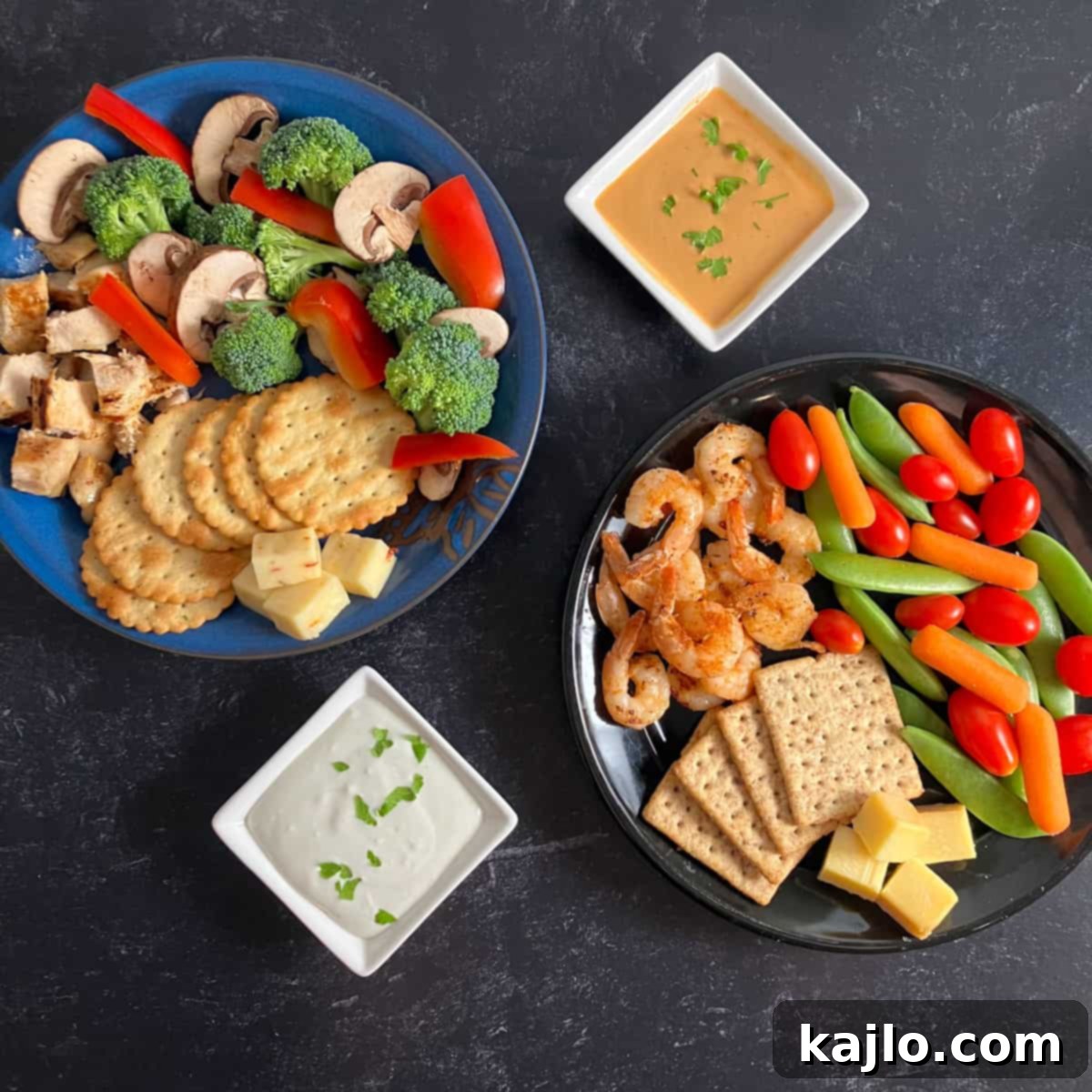
Frequently Asked Questions about MyPlate Meals
Is there a MyPlate meal plan specifically designed for toddlers?
ChooseMyPlate.gov provides tailored recommendations for different life stages, including toddlers. For 2-year-olds, the emphasis remains on consuming “a variety of fruits, vegetables, grains, protein foods, and dairy and fortified soy alternatives.” The MyPlate plan calculator available here can help guide parents on appropriate daily quantities from each food group for toddlers. Always consult your child’s pediatrician or a registered dietitian for specific dietary questions concerning your child’s growth and health.
What are the MyPlate meal recommendations for individuals with obesity?
The MyPlate plan, accessible here, is highly adaptable and can be customized to create a meal plan within a specific calorie allowance. For individuals with obesity, the primary goal is often a safe and sustainable calorie deficit, which should always be determined collaboratively between the client and a registered dietitian or healthcare professional. It’s important to remember that MyPlate primarily encourages individuals to focus on the types and proportions of foods on their plate rather than solely counting calories, fostering a healthier relationship with food and promoting nutrient-dense choices (source).
Are there 6 MyPlate food groups, or five?
MyPlate explicitly features 5 core food groups, not 6. These essential categories are fruits, vegetables, grains, protein foods, and dairy (which includes calcium-fortified soy alternatives). The clear visual representation helps simplify the often-complex world of nutrition by focusing on these five foundational pillars.
How can one incorporate MyPlate principles into dessert choices?
The MyPlate model is primarily designed for main meals, not specifically for desserts. However, desserts can be an opportunity to supplement food groups that might be lacking in your main meals. For example, if your meals don’t always include enough fruit, enjoying fresh fruit as a light dessert or snack is an excellent way to boost your daily intake. Focus on natural sweetness and whole ingredients when choosing treats, aligning with the overall healthy eating philosophy.
Where can I find a comprehensive MyPlate 2-week meal plan?
You can find a sample MyPlate 2-week meal plan here. Please note that this is a general MyPlate plan PDF sourced online, and while it provides a good starting point, it may not be perfectly suited for your individual nutritional requirements or health conditions. Always consider your personal needs, preferences, and consult with a healthcare professional or registered dietitian for tailored advice.
MyPlate vs. Food Pyramid: What are the key distinctions?
The United States transitioned from the MyPyramid guide to the MyPlate model in 2011. This change was implemented to provide a clearer, more intuitive visual representation of appropriate portion sizes and the emphasis on certain food groups. A primary difference is that MyPlate visually depicts fruits and vegetables occupying the largest portion on the plate, directly illustrating their importance. In contrast, the earlier Food Pyramid model often allocated the most space to the grain group, which could sometimes be misinterpreted as a recommendation for disproportionately high grain consumption. MyPlate’s plate-based visual is designed to be more actionable and easier to understand at a glance, directly reflecting current dietary guidelines.
👩🏻🍳 Delicious MyPlate Recipes for Every Meal of the Day
Seeking more inspiration to bring MyPlate principles to your table? Here are some fantastic MyPlate-aligned recipes for breakfast, lunch, and dinner, designed to be both nutritious and delicious!
Inspiring MyPlate Dinner Recipes
These recipes offer healthy dinner options that seamlessly integrate all food groups, ensuring a balanced and satisfying meal. You’ll also find some excellent MyPlate vegetarian recipes among these selections!
High Protein Buddha Bowl (Vegan Mexican Tofu Bowl Recipe)
Check it out here
Trader Joe’s Chicken Shawarma Thighs (Air Fryer Wrap or Bowl)
Check it out here
Low Calorie Nourish Bowls with Dressing (Vegetarian, Vegan)
Check it out here
Nourishing MyPlate Breakfast Meals
Crafting MyPlate breakfast recipes is surprisingly simple and provides a fantastic start to your day. Generally, fruits tend to feature more prominently than vegetables in typical breakfast settings. However, for those seeking a unique and nutrient-packed option, the baked protein oatmeal with meat recipe below cleverly integrates vegetables, offering a savory twist to your morning routine. Explore these ideas for a wholesome and energizing breakfast:
Overnight Oats with Protein Powder Recipe (25 grams protein!)
Check it out here
Baked Protein Oatmeal with Meat (Savory Oatmeal Bake Recipe)
Check it out here
Convenient MyPlate Lunch Recipes
MyPlate lunches and dinners are often interchangeable, providing great flexibility, especially if you work from home or have access to kitchen facilities during the day. These recipes are perfect for packing a healthy meal on the go or enjoying a nutritious midday break.
Chick-Fil-A Spicy Southwest Salad Copycat Recipe
Check it out here
Stuffed Bell Peppers (Air Fryer or Oven Recipe)
Check it out here
Can MyPlate principles be applied to backpacking meals?
Generally, integrating strict MyPlate principles into traditional backpacking meals can be challenging, unless you’re preparing your own customized healthy recipes. Commercial backpacking meals are typically formulated to provide a high caloric density within small, lightweight portions, prioritizing energy for active lifestyles over fresh, high-volume foods. In contrast, MyPlate emphasizes filling half your plate with perishable, high-volume, low-calorie fruits and vegetables.
Additionally, many pre-packaged backpacking meals are highly processed, often resulting in elevated levels of sodium and saturated fat, which diverge from MyPlate’s recommendations to limit these ingredients. In essence, while individual components might align, the overall nutritional profile and convenience-focused nature of freeze-dried backpacking meals tend to make them a less-than-ideal fit for a direct MyPlate meal plan.
Watch How to Make It!
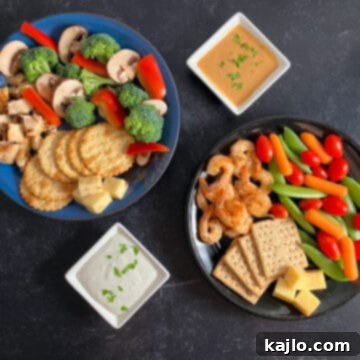
MyPlate Meals Examples (MyPlate Meal Planner Food Guide)
Summer Yule
Leave a comment to rate this recipe!
Print Recipe
Pin Recipe
10 minutes
10 minutes
Dinner
American
1
499
kcal
Ingredients
-
4-6
ounces
cooked protein-rich food, cut into bite-size pieces
(113-170 grams; leftovers are perfect for this) -
3
types
fruits or non-starchy veggies, cut into coins or sticks
(as much as you want) -
1
ounce
dairy cheese, cubed
(28 grams; see article above for alternatives) -
1
serving
crackers, bread, or another grain
(100-150 calories total) -
2-4
tablespoons
dip of choice
Love this recipe?
Please leave a comment below 😊
Instructions
Note: for more detailed information on choosing components for your MyPlate meal, be sure to read the post that accompanies this recipe.
- Simply plate your protein, cut vegetables or fruits, cheese, and crackers. Enjoy with your chosen dip. It’s truly that straightforward! Can healthy meals get any easier and more customizable?
Equipment
-
Knife
Notes
💭 Expert Tips from Dietitian Summer Yule
This is a level 1 recipe (may help support fat loss).
If you have a weight loss goal, creating a low-calorie, high-volume MyPlate dinner is exceptionally easy with this formula. Here’s a typical example of how I would construct such a meal:
-
4 ounces lean protein (~150 calories), such as grilled chicken or shrimp.
-
Three types of non-starchy veggies (under 50 calories), generously portioned to fill half the plate.
-
1 ounce of cheese (~120 calories), or opt for a low-fat cheese alternative to reduce calories.
-
One serving of whole-grain crackers (~100-150 calories), or skip these entirely for a lower-carb option.
- 2-4 tablespoons of a light dip or dressing (~50-100 calories), such as a yogurt-based option or a simple vinaigrette.
There’s a macro diet plate that’s a popular variation, drawing inspiration from MyPlate but often adjusting macronutrient distribution. This plate model, for instance, often reduces all carbohydrates (including grains and starchy vegetables) to occupy only ¼ of the plate. This approach is similar to what I’m doing with this specific MyPlate meal formula, although the official MyPlate guidelines allow for starchy vegetables to be counted within the broader vegetable section of the plate.
If you find yourself needing more energy, you can easily adapt this meal by increasing the portions of crackers and cheese, or by selecting protein sources that are naturally higher in healthy fats. Whatever your specific dietary needs or health goals, this easy-to-customize meal provides numerous ways to modify it to fit perfectly. It is truly a versatile and effective approach that can work for almost everyone!
Nutrition information is for one serving, and will vary depending on the ingredients you use.
nutrition info disclaimer
All recipes on this website may or may not be appropriate for you, depending on your medical needs and personal preferences. Consult with a registered dietitian or your physician if you need help determining the dietary pattern that may be best for you.
The nutrition information is an estimate provided as a courtesy. It will differ depending on the specific brands and ingredients that you use. Calorie information on food labels may be inaccurate, so please don’t sweat the numbers too much.
“To taste” means to your preferences, which may have to be visual to follow food safety rules. Please don’t eat undercooked food x
Nutrition
Calories:
499
kcal
healthy meals with all food groups, meal plate, myplate food guide, myplate meal, myplate meal example, myplate meal plan, myplate meal planner, myplate meals, myplate meals examples
Shop our cookbook!
Easy Air Fryer Recipes for One
Burning your air fryer recipes?
Here’s how to fix it!
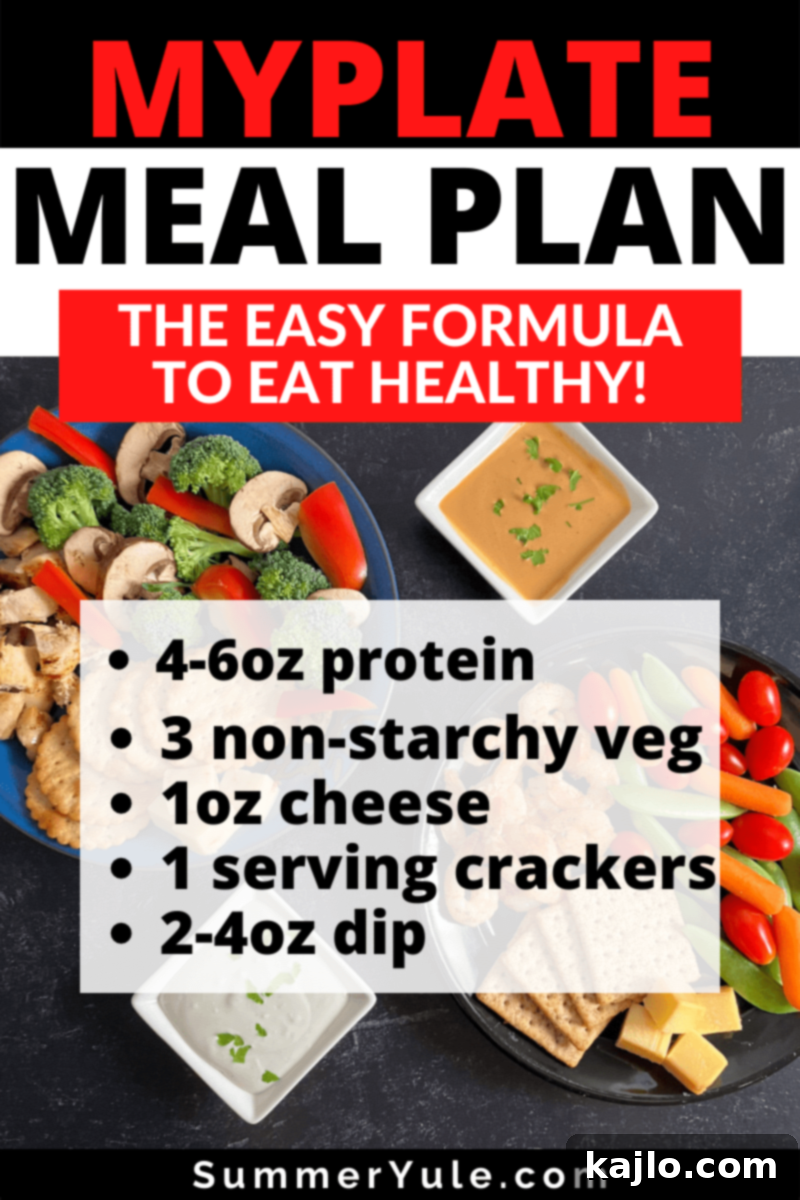
Join our community!
Subscribe
for all of the latest and greatest recipes, and follow me on
Facebook
,
Pinterest
,
Instagram
,
and
YouTube
!
